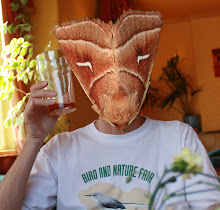3+copy.jpg)
Thought I'd show you a few avian highlights from our few days in the Emirates. Coastal birding was quite productive, especially on the east side of the peninsula. Gulls were a bit of a focus, but maybe I'll do a separate post for them since the situation is a little complex in this region. The magnificent gull above is the unforgettable
Pallas's Gull, this one an adult in almost full alternate plumage. It was the only one we saw here, though we did find a distant flock in the Rift Valley in Ethiopia. The species is perhaps better known by its old (and better name?)
Great Black-headed Gull. There are no identification problems with this species, in any plumage - the shape alone is totally distinctive...
2+copy.jpg)
To see
Sooty Gulls at long last was a real highlight for me - this one being a first-winter individual. This is another very distinctive species that would be hard to confuse with any other - maybe White-eyed Gull could be a potential pitfall?
1+copy.jpg)
More
Sooty Gulls. They are rather thickset, stocky gulls with longish thick bills. Pretty common on the coast, but especially so in the east.

A small flock of the elegant
Slender-billed Gull. We found good numbers of this distinctive gull within the large loafing flocks of
Common Black-headed Gulls on the east coast beaches. They are easy to tell apart with Slender-bills being slightly larger, longer-necked with a gently sloping forehead that merges into that slender, long and pointy bill.

By far the commonest tern was this guy, the
Lesser Crested Tern. Big flocks were to be see roosting with the gulls on the eastern beaches. The hoped-for
White-cheeked Terns didn't materialize (in spite of some wishful thinking whilst scanning heat-hazed flocks of
CommonTerns), though we did find one feeding flock of the equally desirable
Saunder's Terns on the west side.
1+copy.jpg)
These amazing-looking creatures are
Chestnut-bellied Sandgrouse, the only Sandgrouse one is likely to encounter easily here. The male is in the foreground. We saw some fly-bys over the Pivot Fields near Dubai. This photo was taken in Ethiopia where the species is much more common.

An obliging
Common Sandpiper in Safa Park in the middle of Dubai. The sister-species to our
Spotted Sandpiper here.

A lone
Red-wattled Lapwing, a pretty common species throughout the Emirates and beyond.

And the much nicer, more elegant and decidedly more local
White-tailed Plover. This is easy to see on the Pivot Fields in the winter, we saw 30 plus during a brief visit. This one-legged stance is characteristic of the species.
More to follow...


+copy.jpg)





6+copy.jpg)
2+copy.jpg)
2+copy.jpg)









3+copy.jpg)
2+copy.jpg)
1+copy.jpg)


1+copy.jpg)












+copy.jpg)



+copy.jpg)
1+copy.jpg)
1+copy.jpg)
+copy.jpg)
+copy.jpg)


2+copy.jpg)
+copy.jpg)
1+copy.jpg)
1+copy.jpg)
2+copy.jpg)


